





 A Nike research and development round in early 1947 with a cluster booster. |
The first Nike I battery and assembly area prototype was set up for operation at White Sands in January 1953. The first Nike missile was fired from an underground launch facility June 5, 1953, and the contractors were ready to turn over a complete missile battery to the Army Anti-Aircraft Command (ARAACOM). Soon soldiers were training to operate and maintain the system.. Later, Nike I was revealed to the public.
Over the next few years, hundreds of Nike Ajax missiles streaked across the southern New Mexico sky as battery crews, called "packages," trained at nearby Fort Bliss. Texas, before deploying. Later, most of these men returned to Fort Bliss to fire additional missiles during Annual Service Practices (ASPs). Beginning in 1957, many of the men who underwent initial training were National Guardsmen. During the mid-1950s troop training in firing the system, conducted on the White Sands range by the Army Air Defense School, Fort Bliss, was intensified.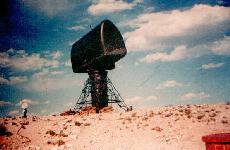 As personnel readied the missiles, the incoming aircraft was picked up on a long-range acquisition radar. For the Nike Ajax system, this radar was known as LOPAR for "Low-Power Acquisition Radar." The LOPAR search radar antenna rotated constantly at a predetermined speed. When targets appeared on the scope, the battery commander used "electronic interrogation" to determine if the target was friend or foe.
Once the LOPAR operator designated a target as hostile, this information was transferred to a target-tracking radar (TTR). The TTR determined the targetís azimuth, elevation, and range, and then automatically provided that information to a computer for use in guiding the Nike Ajax missile. Once energized, the guidance computer received a running account of the targetís changing position.
Adjacent to the TTR, the missile-tracking radar (MTR) locked onto the missile selected to perform the intercept. When the hostile aircraft came within the batteryís range, the battery commander launched the missile. After producing 59,000 pounds of thrust within 3 seconds to push the missile off the launch rail, the missile booster dropped away. Having ignited, the missile accelerated through the sound barrier. Once the missile was in the air, the MTR received continuous data on the missileís flight. In turn, by receiving updates from the TTR, the computer generated course correction information that was transmitted to guide the missile toward the target. At the predicted intercept point, the computer transmitted a burst signal that detonated the three high-explosive warheads.
One of the major flaws of the Ajax guidance system was that it could engage only one target at a time. Also, when the system first deployed, there was no provision for coordinating fire between multiple batteries. Thus, several different batteries could engage the same target and allow other targets to pass through. To alleviate this problem, ARADCOM established command centers where incoming targets were manually plotted and engagement orders were passed to the batteries. However, the inadequacies of this voice command and control system became immediately apparent during defense exercises, which sent the Army scrambling for a new solution. Introduced in the late 1950s, the Interim Battery Data Link (IBDL) provided a "real-time" target data link between the batteries so that battery commanders could readily see what targets other batteries were actively engaging.
As personnel readied the missiles, the incoming aircraft was picked up on a long-range acquisition radar. For the Nike Ajax system, this radar was known as LOPAR for "Low-Power Acquisition Radar." The LOPAR search radar antenna rotated constantly at a predetermined speed. When targets appeared on the scope, the battery commander used "electronic interrogation" to determine if the target was friend or foe.
Once the LOPAR operator designated a target as hostile, this information was transferred to a target-tracking radar (TTR). The TTR determined the targetís azimuth, elevation, and range, and then automatically provided that information to a computer for use in guiding the Nike Ajax missile. Once energized, the guidance computer received a running account of the targetís changing position.
Adjacent to the TTR, the missile-tracking radar (MTR) locked onto the missile selected to perform the intercept. When the hostile aircraft came within the batteryís range, the battery commander launched the missile. After producing 59,000 pounds of thrust within 3 seconds to push the missile off the launch rail, the missile booster dropped away. Having ignited, the missile accelerated through the sound barrier. Once the missile was in the air, the MTR received continuous data on the missileís flight. In turn, by receiving updates from the TTR, the computer generated course correction information that was transmitted to guide the missile toward the target. At the predicted intercept point, the computer transmitted a burst signal that detonated the three high-explosive warheads.
One of the major flaws of the Ajax guidance system was that it could engage only one target at a time. Also, when the system first deployed, there was no provision for coordinating fire between multiple batteries. Thus, several different batteries could engage the same target and allow other targets to pass through. To alleviate this problem, ARADCOM established command centers where incoming targets were manually plotted and engagement orders were passed to the batteries. However, the inadequacies of this voice command and control system became immediately apparent during defense exercises, which sent the Army scrambling for a new solution. Introduced in the late 1950s, the Interim Battery Data Link (IBDL) provided a "real-time" target data link between the batteries so that battery commanders could readily see what targets other batteries were actively engaging.
Specifications | |
| Length | 21 feet (34 feet 10 inches with booster) |
| Diameter | 12 inches |
| Wingspan | 4 feet, 6 inches |
| Weight | 1,000 pounds (over 2,455 pounds with booster) |
| Missile fuel/oxidizer | M3, a combination of JP4 jet fuel and starter fluid consisting initially of aniline/furfuryl alcohol, later dimethyl-hydrazine, and finally, red fuming nitric acid (IRFNA) |
| Booster fuel | Solid propellant |
| Range | 25 to 30 miles |
| Speed | Mach 2.3 (1,679 mph) |
| Altitude | Up to 70,000 feet |
| Guidance | Command by electronic computer and radar |
| Warhead | Three high-explosive fragmentation warheads mounted in the nose, center, and aft sections |
| Contractors |
|
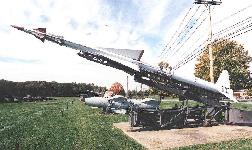
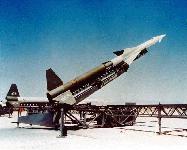
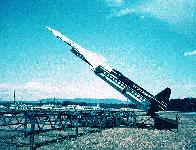
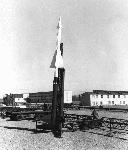

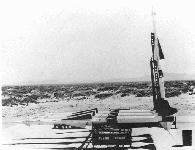

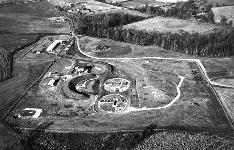
|
|

